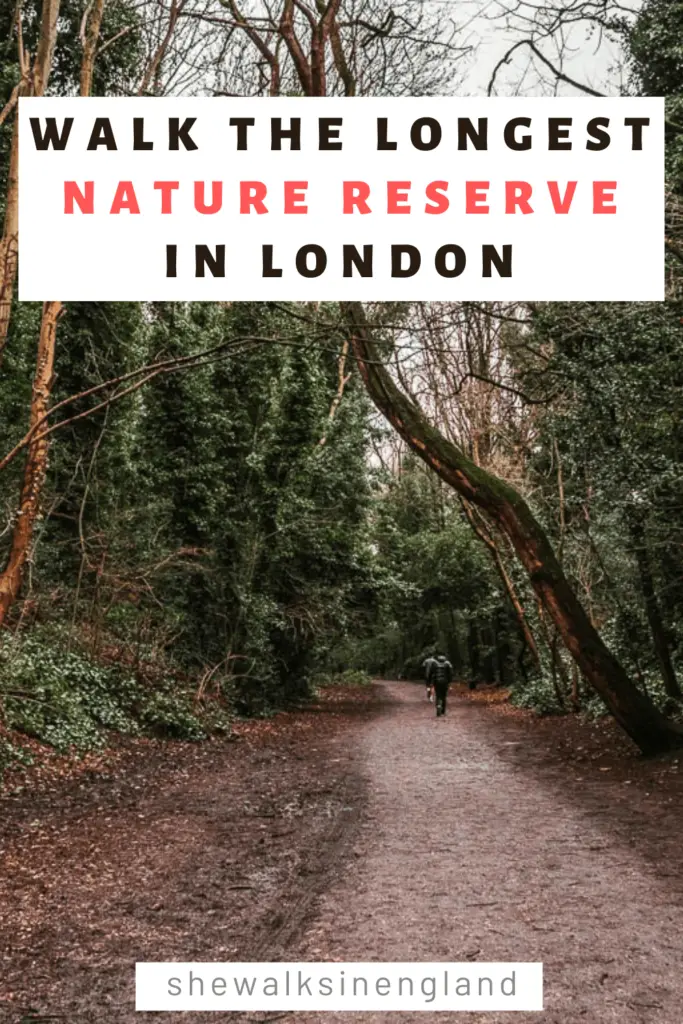The Parkland walk is the longest nature reserve trail in London. Located in North London, it runs from Finsbury Park to Alexandra Palace, following the old railway line. The railway tracks aren’t there today, but along the route you will pass by remnants of the past.

What to expect on the walk
The Parkland walk is an easy route along a wide dirt trail, lined with trees and bushes the whole way. There are informations boards here and there (but not enough in my opinion) telling you about the history, and some of the trees, birds, and insects (yuk) along the trail.



You will see old railway ruins, and some impressive views of the London skyline. When I describe the walking route further down, I will tell you about all of it.


The Parkland walk is actually divided into two sections. Parkland Walk South (the longer section) and Parkland Walk North (the shorter section). Highgate (and Highgate Wood) is in between the two sections.
Highgate Wood is a 70 acre ancient woodland, and is thought to have been around since the Roman times. If you like your trees and shrubs, then these woods have over 50 species of them.

The Highgate section does involve a little bit of road walking, but the rest is pretty much nature.
How long is the Parkland walk?
The Parkland walk trail is just under 4 miles long, however, you will end up walking about 5 miles from station to station.
There is an option to make it shorter though. Highgate is the midway point (between the north and south sections), which takes you past Highgate Underground Station if you would like to end/start the walk there.
If you want to pick one section, but aren’t sure which one, you will find more railway history and bigger trees on Parkland Walk South, and more impressive views plus Highgate Wood on Parkland Walk North.
Logistics
- Start: Finsbury Park Station
- Finish: Alexandra Palace Station
- How to get there: Finsbury Park Station is on the London Underground (Victoria and Piccadilly lines) and National Rail Great Northern. Alexandra Palace Station is National Rail Great Northern. Alexandra Palace and Finsbury Park are 3 stops apart on the Great Northern line. What I did is buy a return ticket to Alexandra Palace on Trainline, then got off a few stops earlier and Finsbury Park.
- Distance: 4.9 miles
- Time: It took me about 1h40 min to complete
- Terrain: Dirt trail, maybe some mud, road, some steps.
- Difficulty: Easy
- Dog friendly: Yes
Amenities along the Parkland Walk
- At the start of the walk by Finsbury Park station, there is a Tesco and Lidl nearby. Apparently there is a toilet in the station, but I couldn’t find it.
- By the old railway platform on Parkland walk South, off the trail is the Merro Cafe which is dog friendly. It’s signposted.
- Around Highgate there are a few cafes and pubs.
- In Alexandra Park you will walk past the Grove Cafe, which is open Thursday-Sunday. There is the Phoenix Bar and Pizzeria at Alexandra Palace.
- Opposite Alexandra Palace Station is a highly rated pub called The Starting Gate.

Map for the Parkland Walk Route
If you like old railway line walks, just outside of London you could try this one along the Worth Way.
Route Description for the Parkland walk
After you exit Finsbury Park station, turn left and head into Finsbury Park. There is a big sign outside saying ‘cycle park’.

A short way along, take the left trail off the main path and walk all the way to the end, then turn left.

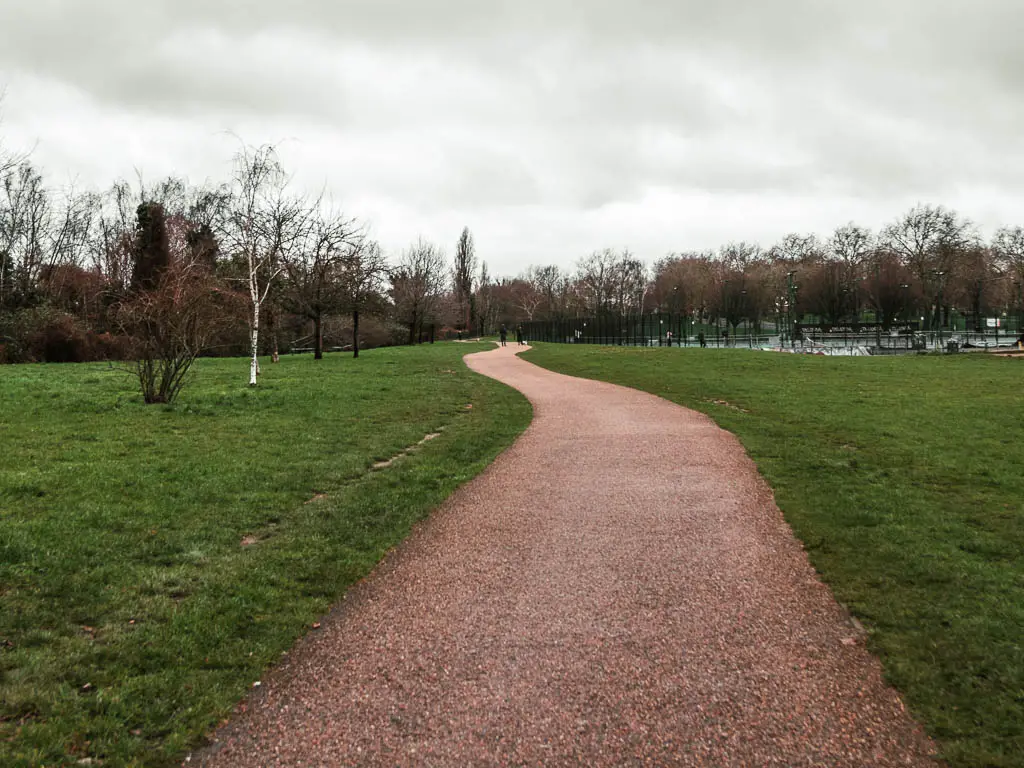

Once over the bridge, take the first right, which is the start of the Parkland walk.

Parkland Walk South
Before heading out on the Parkland Walk, I did a bit of research into what I would see. Basically lots of trees and insects. I wasn’t interested in the insects and would rather prefer they weren’t there, so I focused on the trees. I read about the types of trees and history, only to realise that once I got there I had no idea what I was looking at.

From my research I can tell you that there are a mix of native English trees, and non native trees which probably ‘escaped’ from one of the neighbouring gardens. One such tree is the Stag’s Horn Sumach, from North America. It’s twigs are covered in soft brown hairs, like antlers of a stag.
I couldn’t see it. Maybe I didn’t look hard enough.
Although, I did have other things on my mind. I needed a wee. When out walking in the countryside, it’s easy to find a hidden spot to go. Not so much here. The trail is lined with houses on both sides, and the trees weren’t thick enough to block the view. In summer when things are more bushy, it might work. But not now, in the heart of winter. I would have to hold it.

Views and old railway stuff
Some way along, you will get a view across the rooftops, and to the BT tower in the distance.
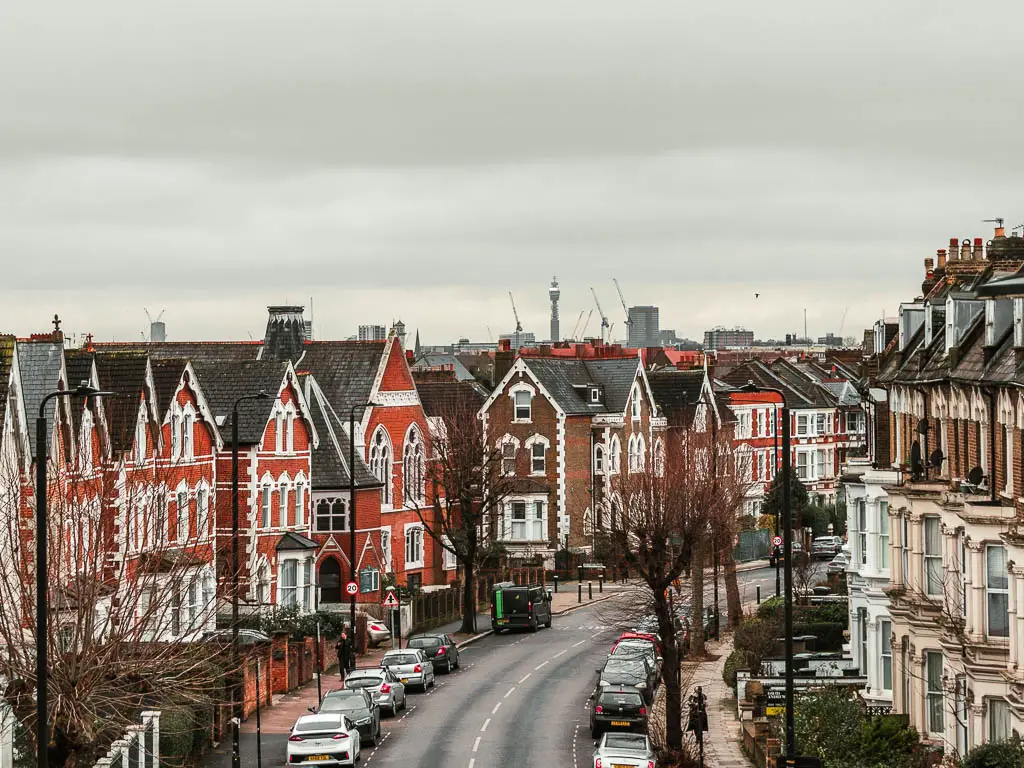
Next there is a bridge with these platforms which I felt so sure must be part of the old railway. Now I’m not so sure. I can’t find anything concrete about it online.

The next part is the real deal though. After passing some graffiti covered brick archways, you will reach a junction. Take the right, then further along just past some more graffiti covered brick archways, you will reach the old railway platforms. This felt pretty cool, partially engulfed by greenery. Nature claiming back its land.




Past the platforms and under the interesting looking bridge, you will reach some ruins of a wall, with the roots of an old sycamore tree sticking out of it. It’s not known exactly what this was, but the consensus is that it was a building associated with the railway.

The big trees
Continuing on the trail, it feels very different along here. The trees get bigger, and it feels more and more like you are out in some forest in the countryside. You will come across an information board telling you about the trees you see. One of these would have been useful earlier.



The wildlife trail and bats
Near the end of Parkland Walk South, you will pass a garden like area to the right. This is the wildlife trail biodiversity project. It’s maintained by volunteers every Wednesday. Interestingly, today was Wednesday. I watched them working for a moment, then one suggested I joined in. I gave a little chuckle, then left.

Just next to the conservation area, is an information board which warns you that you might get lost trying to find Parkland Walk North. It explains a few route options to get there. But don’t worry, I will show you.

Before you leave Parkland Walk South though, there is one last thing. The bats. Just before the trail leads up towards the road, there is an open area to the right, which leads to some old railway tunnels. I have read that the access is blocked by bars, but you can spot some bats from them. I didn’t go over to look, as the ground was a bit wet.


Highgate
When you reach the road, turn right. Then at the blue walled building, turn right onto the main road. The blue building is the Boogaloo. This brought back memories. This area is actually my old neck of the woods. I used to live a few minutes walk down the road.

Continue along the main road, passing by Highgate Station.

Fun Fact: Jerry Springer was born in Highgate Station, during World War II (it was used as a bunker).
It’s also a great station if you want to do stair training (if you don’t mind the air quality). Many moons ago when I was training for a race that would involve lots of stairs, this was the best place I could find in London with lots of steps (118) in a straight line up. Hampstead station does have more steps, but they wind up, which isn’t fun.
When you reach the Woodman Pub, turn right, then a short way down the hill take the left opening into Highgate Wood.


Highgate Wood
Upon entering Highgate Wood, there are a couple of options. Take the right trail. You can explore the woods more if you want, but I chose to keep things simple and stay walking along the edge. It’s easy to get lost in woods. I’ve got lost in these woods before.


When you reach the next junction, take the right, and you can now follow this path right to the end.

But first, you will pass by the Highgate Wood Lodge. It was built in 1886 and designed by the same guy that did Leadenhall and Old Billingsgate Market. It was built as the home of the Highgate Wood’s head keeper, and to this day is still used as accommodation by staff.

Now make your way along the path all the way to the very end, and turn right to exit at Cranley Gate.



Once you exit, cross over the road and turn left. At the first road on the right, you will see a Parkland Walk North sign pointing along it. This is confusing. Don’t take this road, but instead look across the other side and you will see the entrance to Parkland Walk North.


Parkland Walk North
Upon entering, walk down the steps and turn right. You will now be back on a tree lined trail. Along here there is a small wall platform type thing. I feel like this must be something to do with the old railway, but again, I can’t find anything about it online, so I will just pretend.
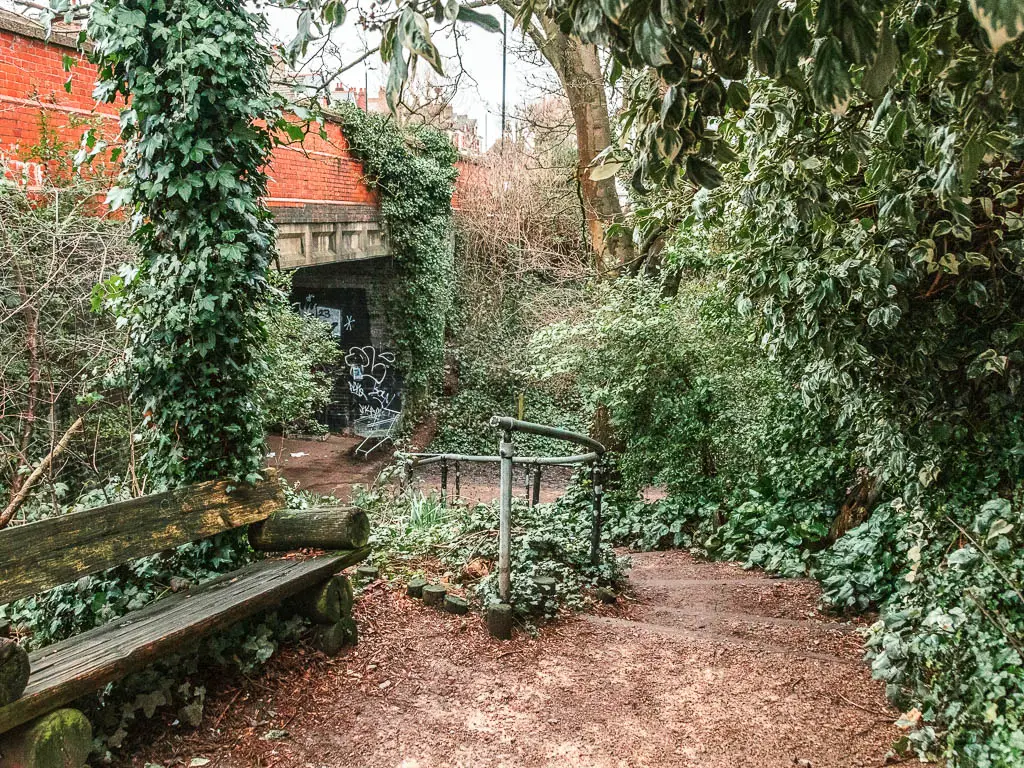

After a bit of walking, you will reach a bridge. I have read that this is an impressive archway bridge, which really doesn’t mean much if you are walking along it as you can’t see any of that. What you do get from here is the best view so far of the Parkland Walk. Way in the distance you can see the skyscrapers of Canary Wharf, and next to it, the City of London and the Shard.

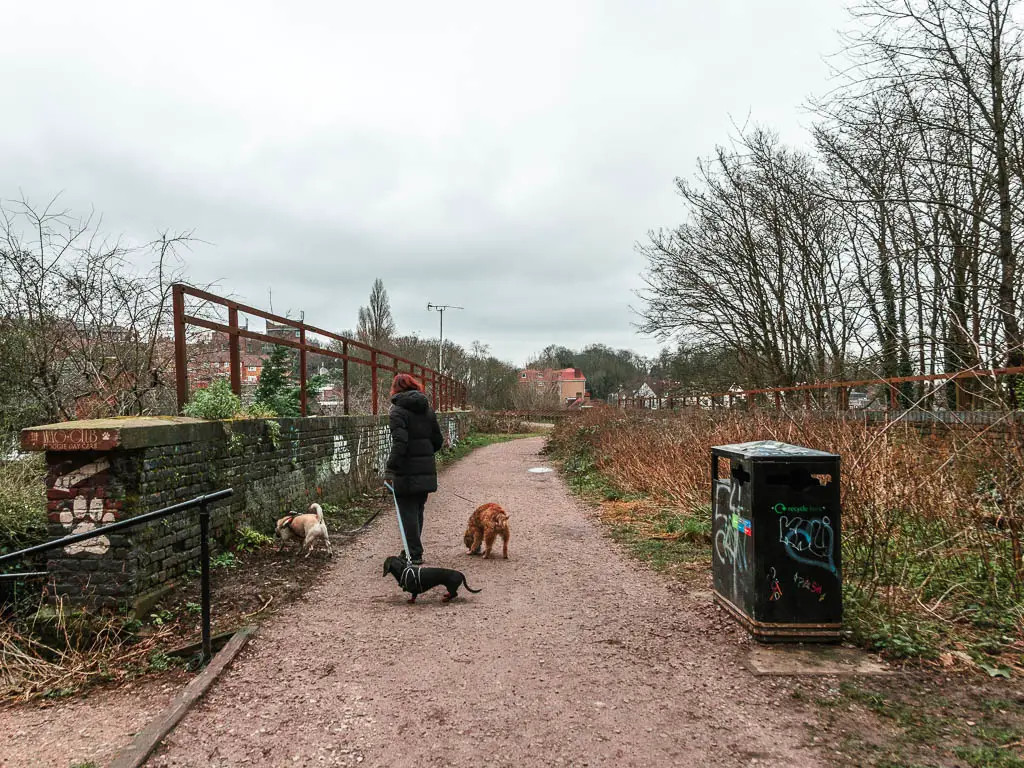
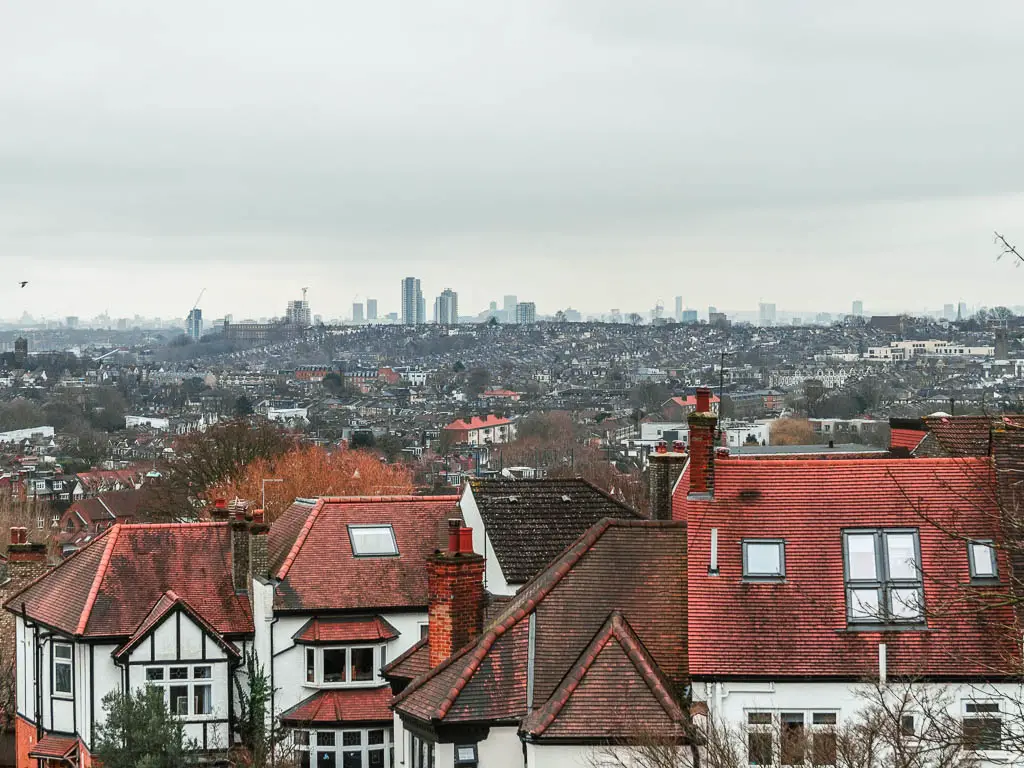
Alexandra Park and Palace
When you reach the bridge tunnel, walk though it. The path will curve right, the straight ahead are the gates of Alexandra Park. Go in there.
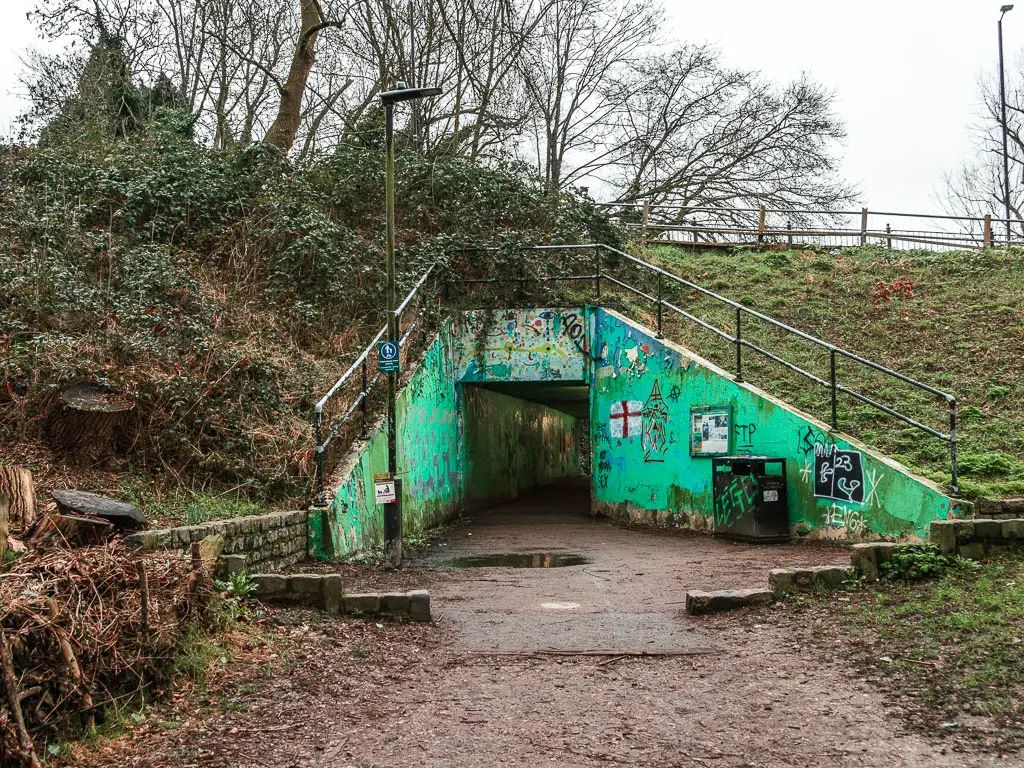

In Alexandra Park, when you reach the first junction, take the left. Then at the next junction a bit further along, go left again. Along here you will get your first view to the top of Alexandra Palace.

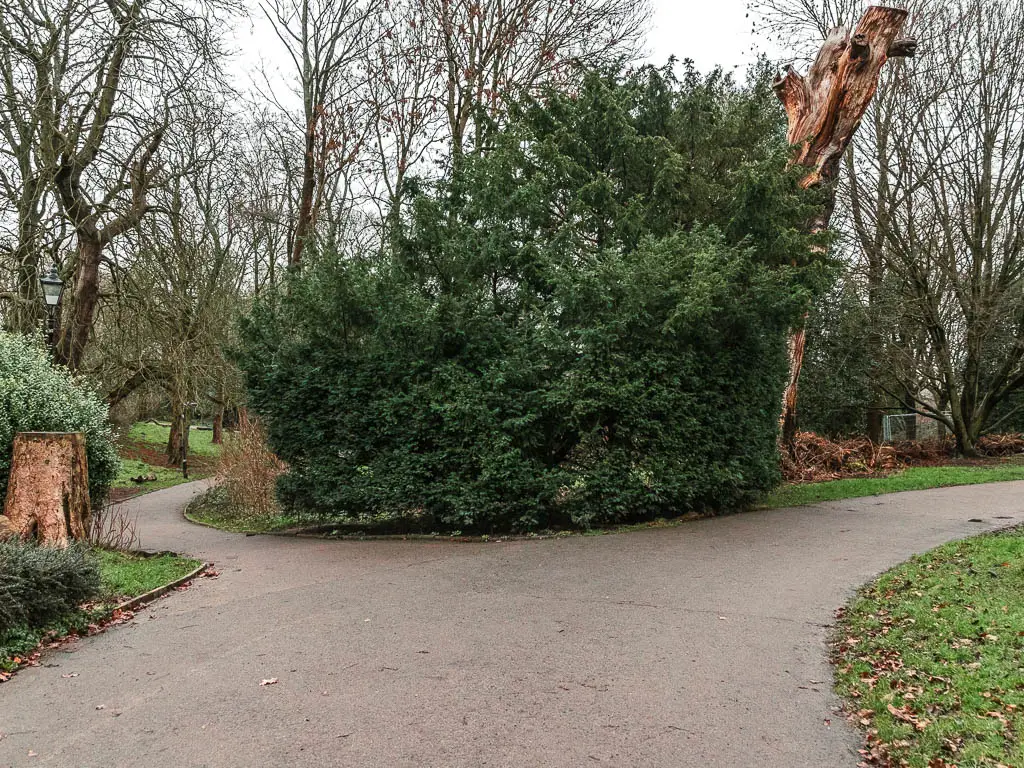

At the car park, take the path along the left side of it, then at the bottom, cross over the path and onto the trail directly opposite.


When you reach the road, walk up it towards Alexandra Palace. Alexandra Palace is a sports and entertainment centre. So depending on when you do this walk, it could be packed and full of people, or completely empty. Back in the day I have been to gigs, and ice skating here.
When you reach Alexandra Palace, continue walking along the right edge. You will have a view to the London skyline again, but it gets better in a moment.

Continue walking along the edge to reach the long walkway where you will get all the views of the skyscrapers in the distance. Including the Shard again. There are those binocular things here if you want a closer look at the views.


Walk to Alexandra Palace Station
To get to the station, continue along the walkway to the other side, then cut diagonally across the car park.
You now want to walk on the path directly opposite the Alexandra Palace East Court entrance. It will take you past a fountain, and down down the hill.


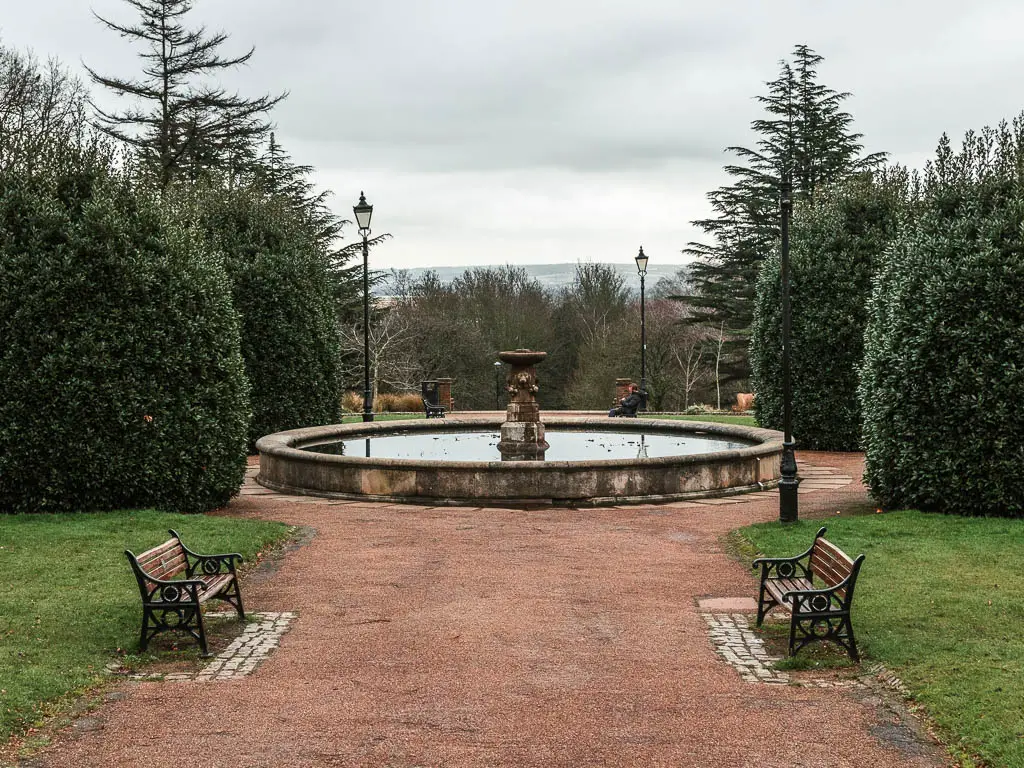

At the bottom, you can turn right, then left. I instead stayed straight onto the dirt trail. I really needed that wee still, and it looked more hidden this way.

It was a good place for a wee, but it’s also quite muddy, so if you want less mud, take the other route. If you take this route, keep following the trail to reach the road later on. When you reach the road, turn left. Then walk for a little along the path next to the road.


The entrance to the station is a bit hidden. Look out for a small opening in the railings on the right. This will lead you straight to Alexandra Palace Station.

More similar walks
For more of a nature feel in London, you might like the Little Venice to Camden trail. It’s a short easy route taking you along the Regents Canal, and alongside Regents Park. Or you can do the big boy and walk the whole of the Regents Canal.
My favourite for nature in London is the Richmond to Hampton Court route. This one follows the River Thames, and definitely doesn’t feel like you are in London. You should see a lot of deer on this one.
If you would like to see more of the London skyline, then this one to Primrose Hill won’t disappoint. It’s one of the prime spots in the city for views.
If you fancy seeing the city closer up, then I recommend the Jubilee Walkway City of London route. This one takes you on a journey between the old and new, featuring Roman remains, and one of the oldest pubs in the city.
Pin it for later:

